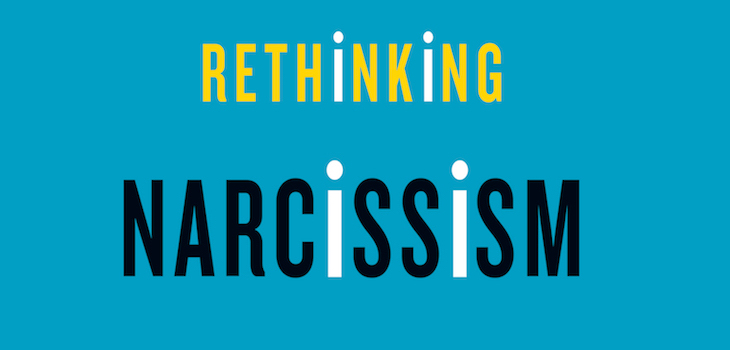Dr. Craig Malkin has rethought narcissism. Having grown up with a narcissistic mother he sought out to make sense of the etiology, usefulness, and purpose of her (and most likely his own) behaviors. We know that our actions, given sufficient information, can be understood and often connected back to some nature/nurture moment.
I view most patterns, especially pathological ones, as on a continuum; I always have. For example, despite the term “sex addiction” used throughout this site, not all people who engage in compulsive hypersexual behaviors are addicts; in fact, most are not. Like anything else there is a small segment of the population (perhaps it follows the bell curve?) that fits into the extreme; most are somewhere along the continuum and I would not refer to them as addicts.
Such is the case for narcissism. Dr. Malkin, in his infinite wisdom, describes a two-sided continuum, a spectrum, where there is a space in the middle for healthy narcissism and the potential to develop pathology on either end of the spectrum. Although he does not mention it, he appears to borrow from early psychoanalytic theory that claims that during very early child development (the first 1-2 years) we move through a stage of narcissism whereby if we are attended to properly by our parent(s) we emerge with a healthy version of narcissism and not an unhealthy version; this follows true for the borderline stage, which I believe preempts the narcissism stage. Now he does not refer to this stage and I also agree that the potential to develop both healthy and unhealthy narcissism is not just during this time but throughout one’s developmental years—that is, he believes that the development of narcissism is more nurture than nature.
As one moves down the spectrum there is the development of narcissism with a malignant form at the end, the latter of which we tend of think of as the malignant type (aka Donald Trump). But on the way there are variants and lighter forms of the personality disorder-we refer to them as personality features, traits, variants. On the other side of healthy narcissism is almost the opposite, the echoist he calls it. This is someone who has no or low self-esteem, who does not ask for their needs to be met, blames for issues in relationships and prefer to focus on others instead of themselves, for example-clearly someone who could have been raised in the same household but has not developed the defensive structure to cope; hence they are weak and debilitated. These are the people who echo their own parent’s narcissism. The danger is that, as we tend to repeat the patterns in our family of origin, they fall for extreme narcissists. Dr. Malkin is a self-proclaimed echoist having echoed the narcissism of his mother.
Interestingly, research points to a rather high correlation between some form of narcissism and addiction. For those who don’t establish early healthy connections and have little trust in the world there is a need for someplace to turn towards and since they can’t turn towards people they turn to objects in which they can allegedly control. Addictions are an attachment disorder-they are a transitional object there to bind the intense fear and anxiety that they never had the opportunity to master.
Healthy narcissism involves feeling special, feeling different at times that are important and warranted to help us have some self-esteem . . or according to what Louse Hay says as she refers to the title of her annual conference “I can do it”. More on healthy narcissism later.
The book is a definite read. The text is highly understandable and non-clinical and there are many very useful examples in understanding ourselves and others and ways in which to deal with and speak to the narcissist.






